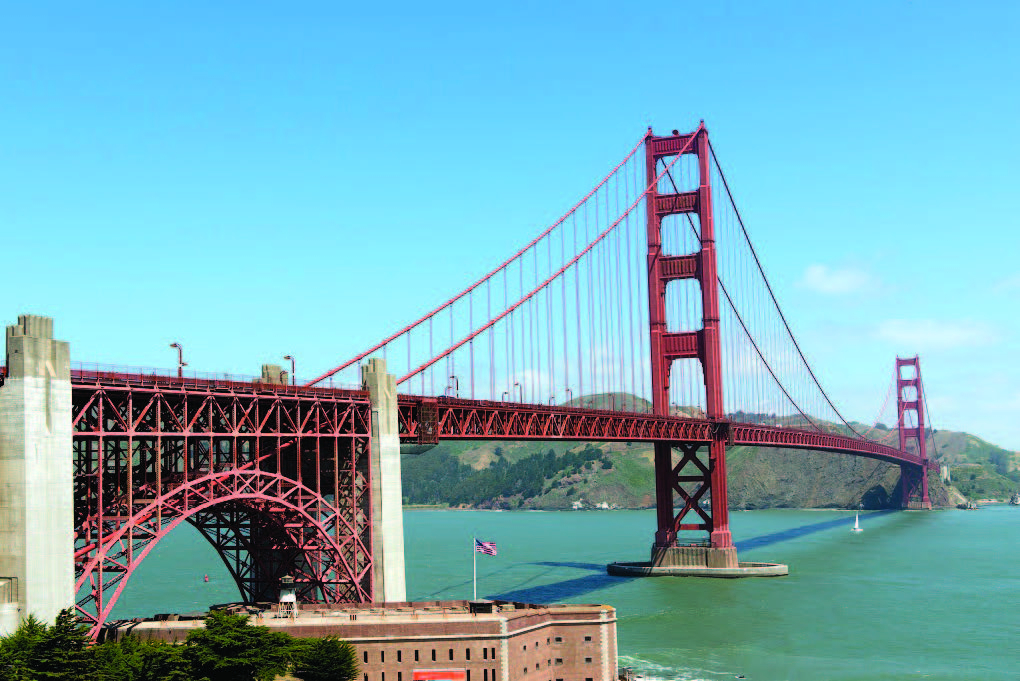
San Francisco, the setting for the book Dragonwings, is located in northern California on a tip of a peninsula that is surrounded by the Pacific Ocean and the San Francisco Bay. San Francisco has unique weather that can be very windy and extremely foggy all year round.
Spanish colonists founded the city of San Francisco in 1776, but the city really only began to boom around 1849, with the start of the California Gold Rush. After miners found gold in this area of California, thousands of people rushed to the area hoping to strike gold and get rich quick. The Gold Rush also brought an influx of Chinese immigrants to San Francisco.
The city of San Francisco was teeming with residents by the early 1900s, which meant that all these hundreds of thousands of people had things to do and places to go. Many of these places included business in across-the-bay places like Marin County or Oakland. Unfortunately, the only way to get to either place was by ferry or by riding a few hundred miles out of your way. Hundreds of ferries crossed the bay each day, but ferries were neither economical nor very practical.
The people of San Francisco wanted a bridge, but there were many obstacles to building one. Firstly, no one had ever built a bridge as long as the one they would need to stretch from San Francisco to Marin County. Secondly, the San Francisco Bay, though not very deep, has strong currents and waves, plus a good dose of rather robust winds. Thirdly, San Francisco’s tendency toward thick, soupy fogs impeded visibility and happened frequently throughout the year. Finally, earthquakes: the longest bridge never yet built had to withstand San Francisco’s earthquakes—a major earthquake in 1906 all but flattened the city.
In 1923, the city finally decided to proceed in its plans for the construction of a bridge across the Golden Gate Straight, the narrow body of water separating northern San Francisco from Marin County. Joseph B. Strauss led the project as the Chief Engineer. He hired a team of engineers, architects, geologists, and construction workers for the project. It cost $35 million to build the bridge, which, in today’s terms, would be more than one billion dollars.
A few things about the bridge’s construction are pretty interesting: The first is that it had to be a suspension bridge. A regular bridge has several huge supports starting on land and standing up, out of the water. A suspension bridge only has two supports, or towers, and both are on the land on either side of the bridge. That means that there are no towers supporting the center of the bridge. Instead, the bridge would be suspended in mid-air by its own strength—in this case by thick steel cables. A suspension bridge is more complicated to build than a regular bridge in some ways—in this particular case, it was more difficult simply because no one had built such a long suspension bridge before and they had to come up with new ways of engineering the structure.
Another way the construction of the bridge is unique is because Strauss insisted on following strict safety standards to protect the construction workers. Up until this point, it’s safe to say that safety wasn’t anyone’s first priority when it came to construction. Strauss insisted that construction workers wear anti-glare safety glasses, hard hats, safety lines, and a special hand and face cream to protect workers’ skin against the strong winds. Workers had to eat a special diet to protect them against getting dizzy. Strauss also installed a gigantic net under the work areas, so that if a worker fell off the bridge, he wouldn’t tumble to a watery death.
The safety net saved 19 men over the course of the bridge’s construction. These men formed the “Halfway to Hell” club, which was actually a real club with letterhead and all. An image on the letterhead showed a worker relaxing in a net.
Unfortunately, the net didn’t save everyone. Eleven men died while constructing the bridge. Ten of them died in a single accident: they fell into the net, and the heavy scaffolding upon which they were working fell on top of them, tearing the net.
A final interesting fact about the Golden Gate Bridge is its unique color: it’s a deep, dark orange. And there’s a story behind that, too. The steel for the towers of the bridge came coated in a special orange paint that protected the steel from environmental factors like rain, saltwater, heat, sun, and wind. Strauss liked the color so much that he wrote a 29-page report trying to convince other decision makers to let him paint the entire bridge in that color.
The color of the bridge is actually more important than you might at first think. It has to be clearly visible to airplanes, birds, and ships. It also has to stand out in the thick San Francisco fog. The U.S. Navy wanted the bridge to look like a giant bee—with yellow and black stripes and the Army Air Corps wanted red and white stripes. In the end, Strauss won out and painted the bridge “International Orange.” In the end, everyone agreed that the color not only stood out, but also looked really good.
The bridge opened to the public in 1937. It was the longest suspension bridge in the world, until the Verrazano-Narrows Bridge in New York City was finished in 1964. Today, the Golden Gate Bridge is the second-longest suspension bridge in the United States.



 About BeeLine
About BeeLine